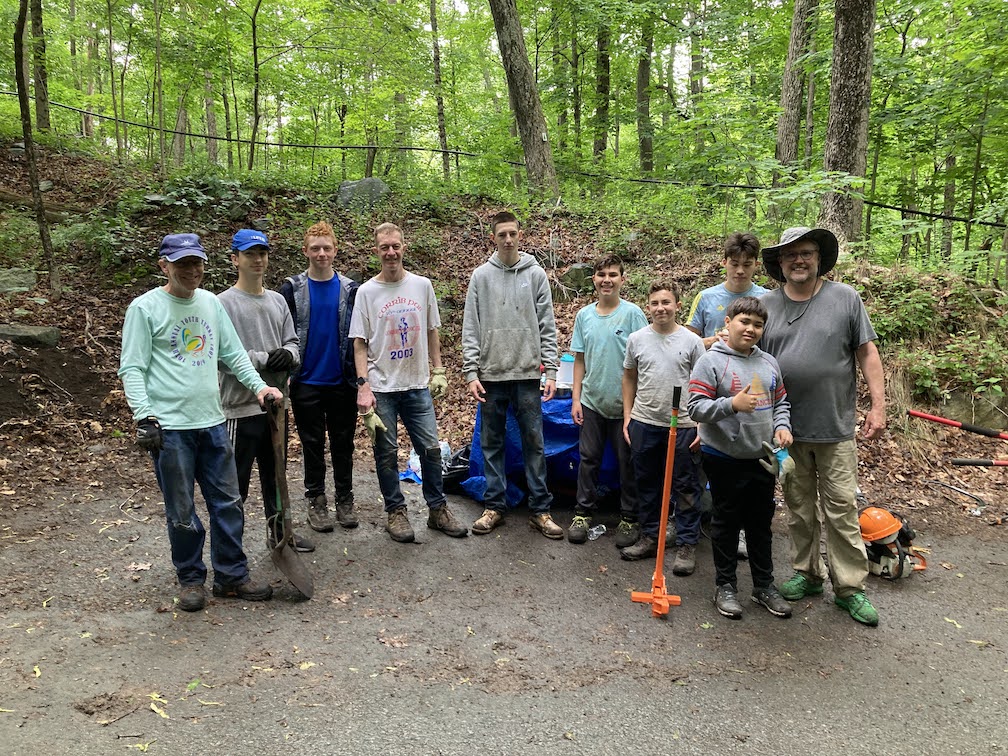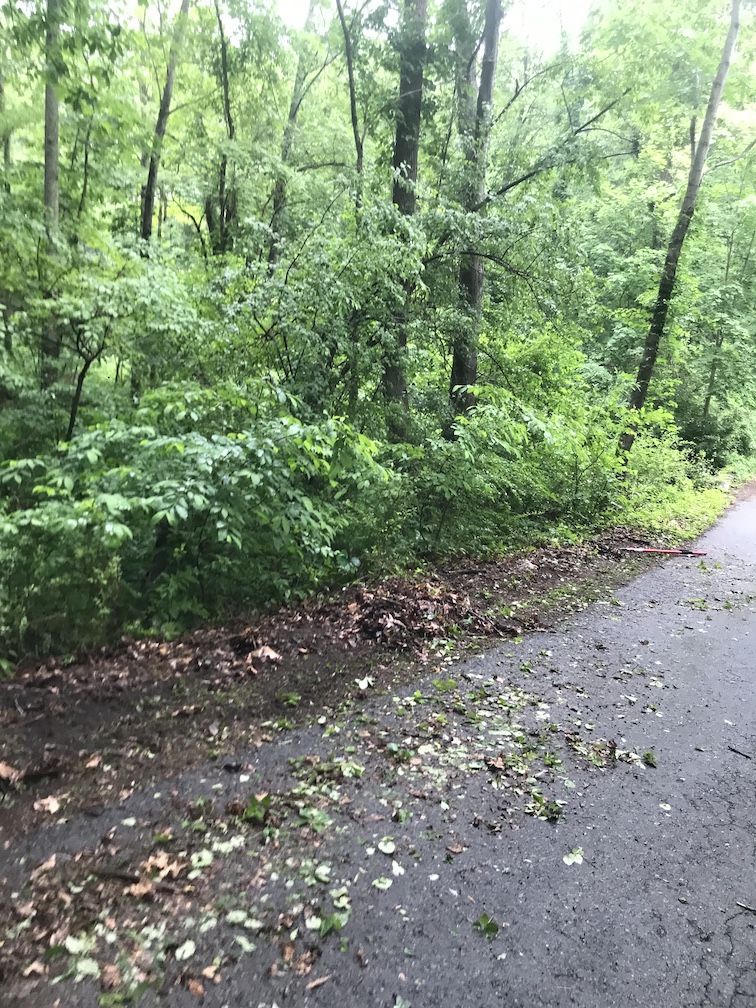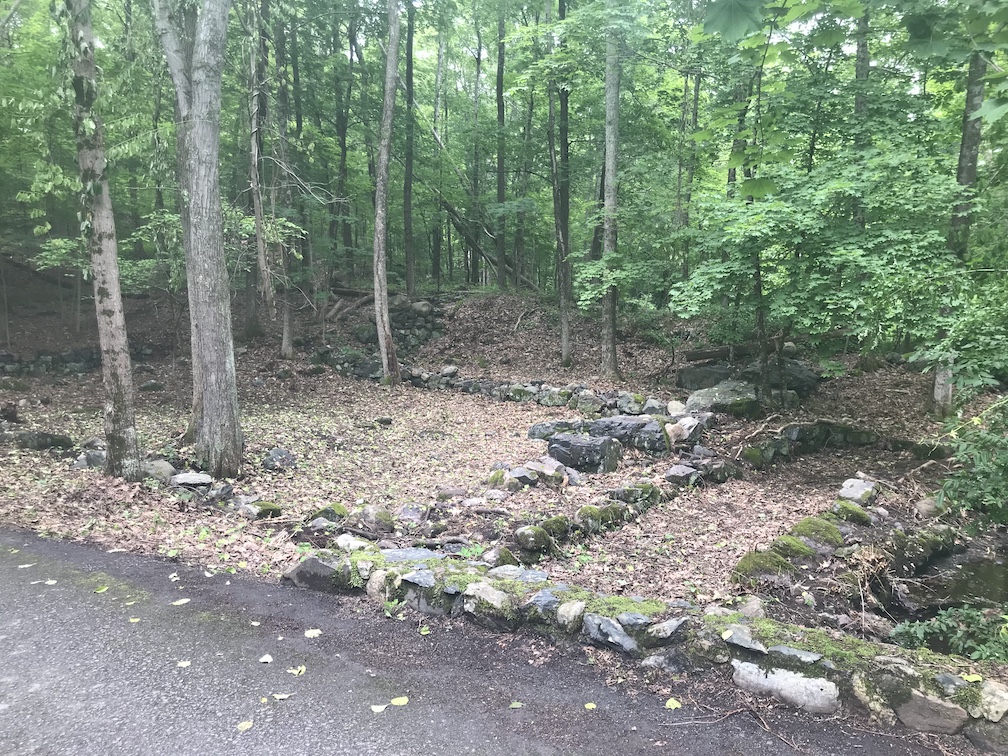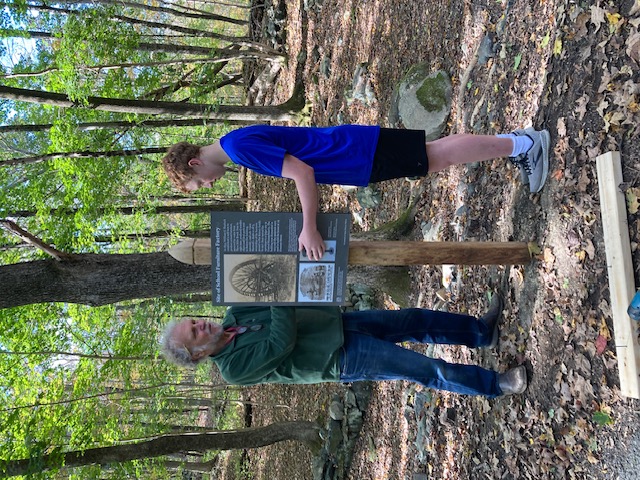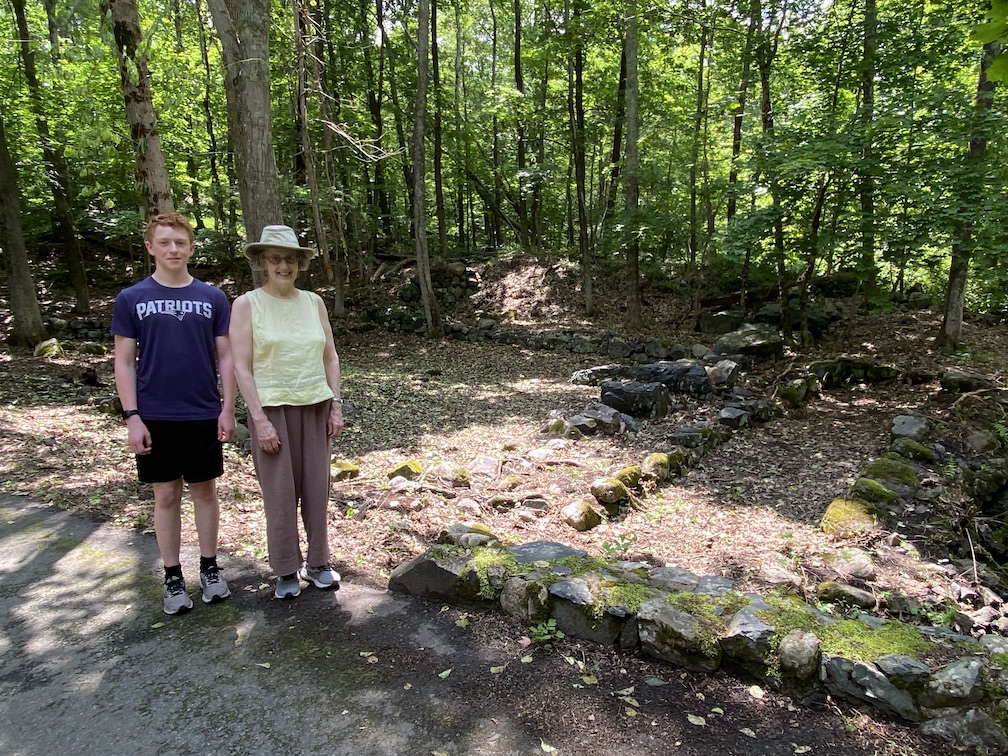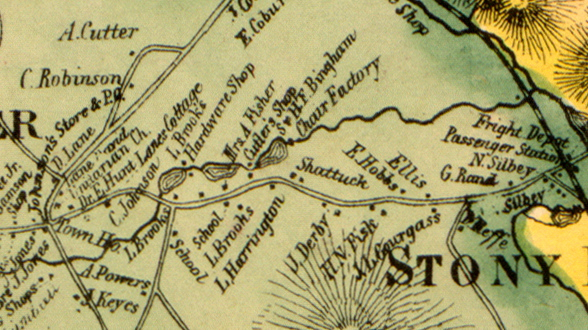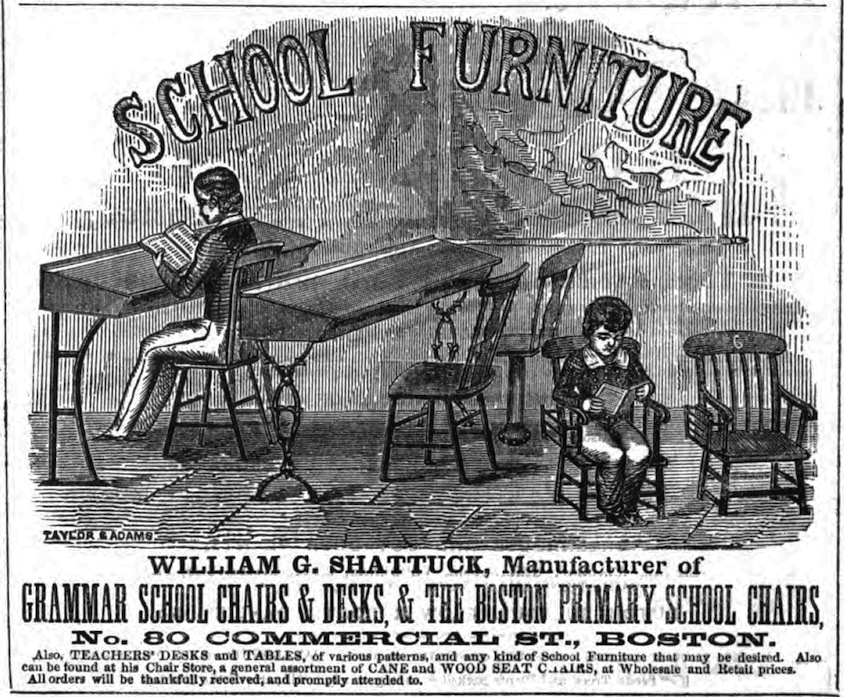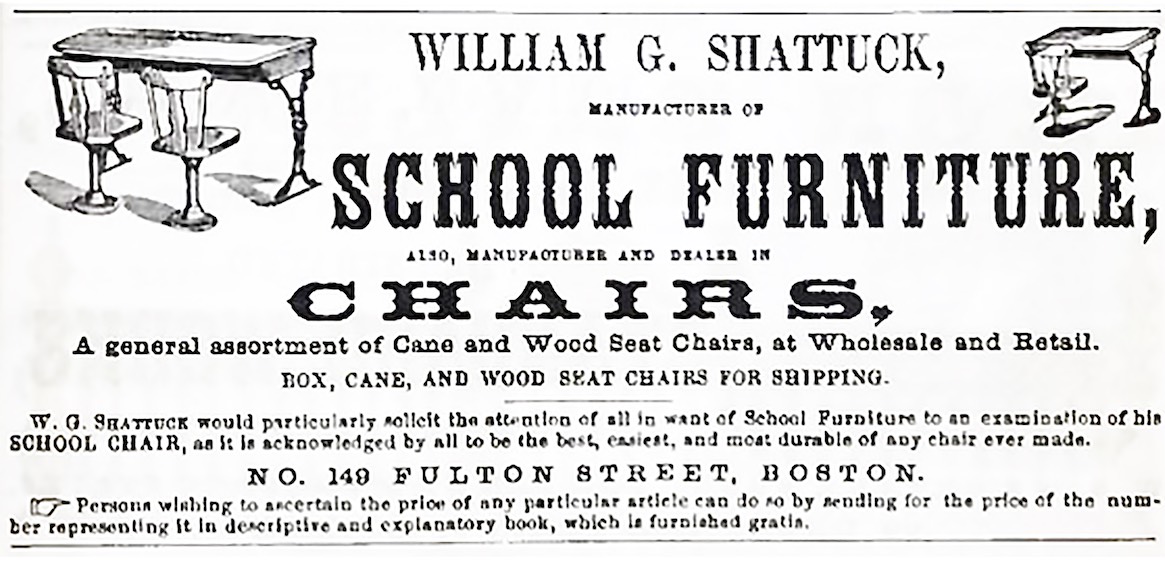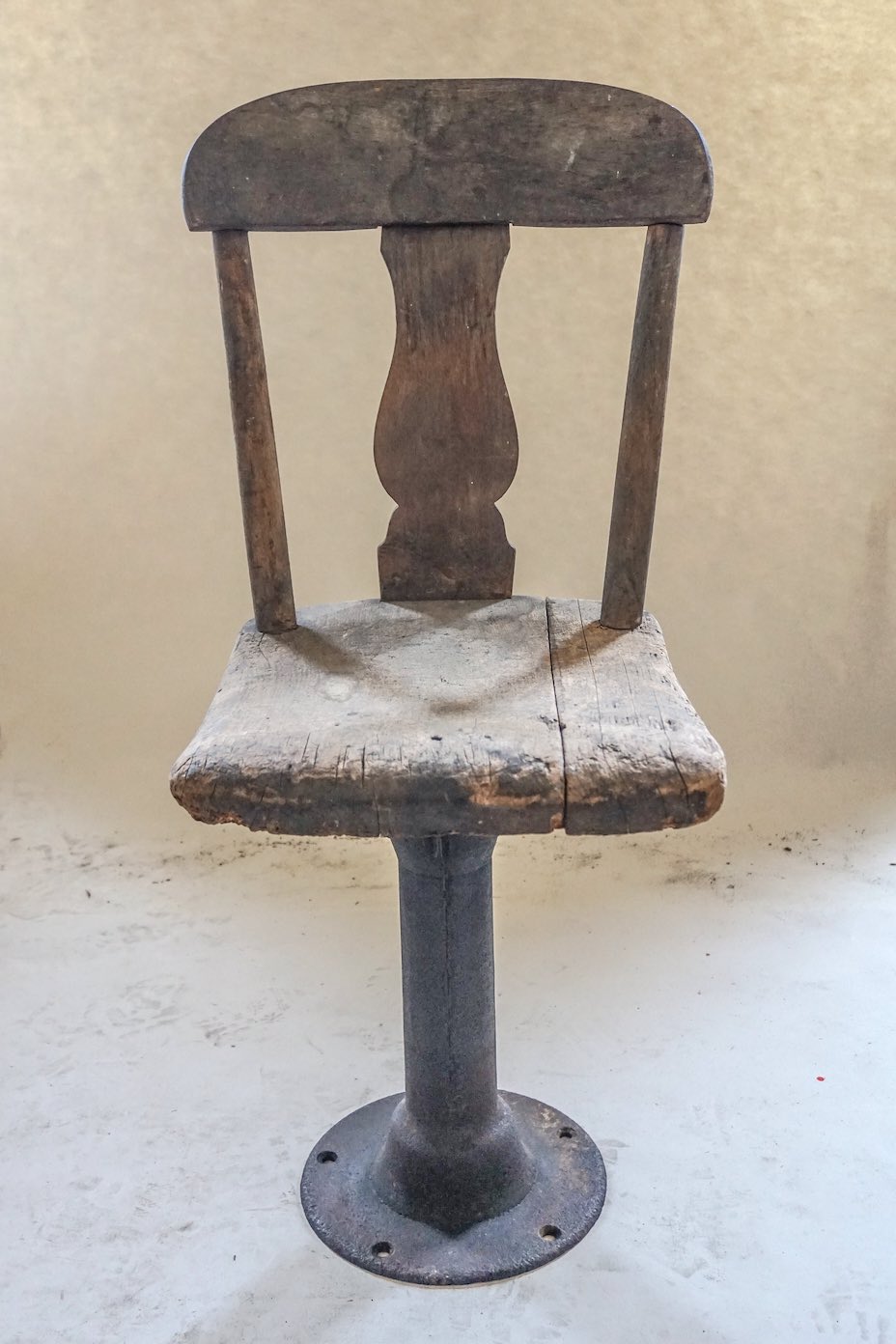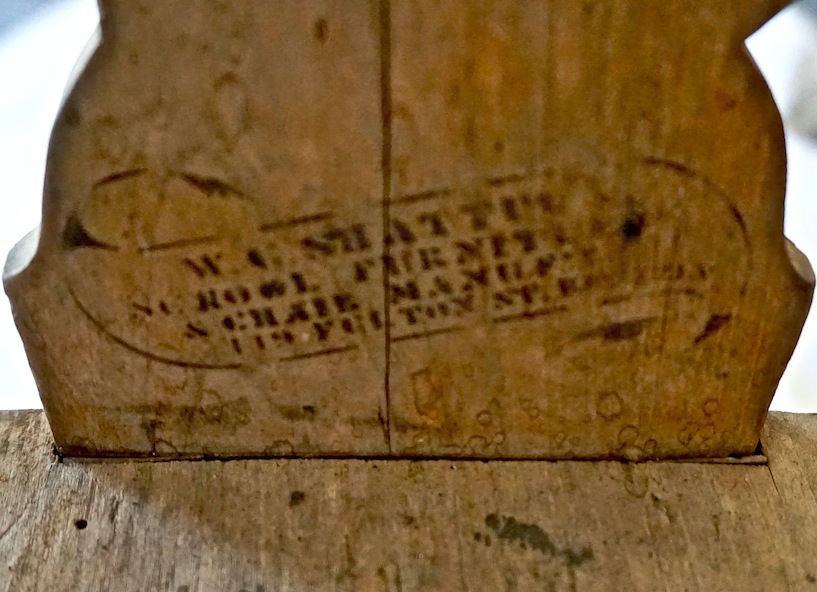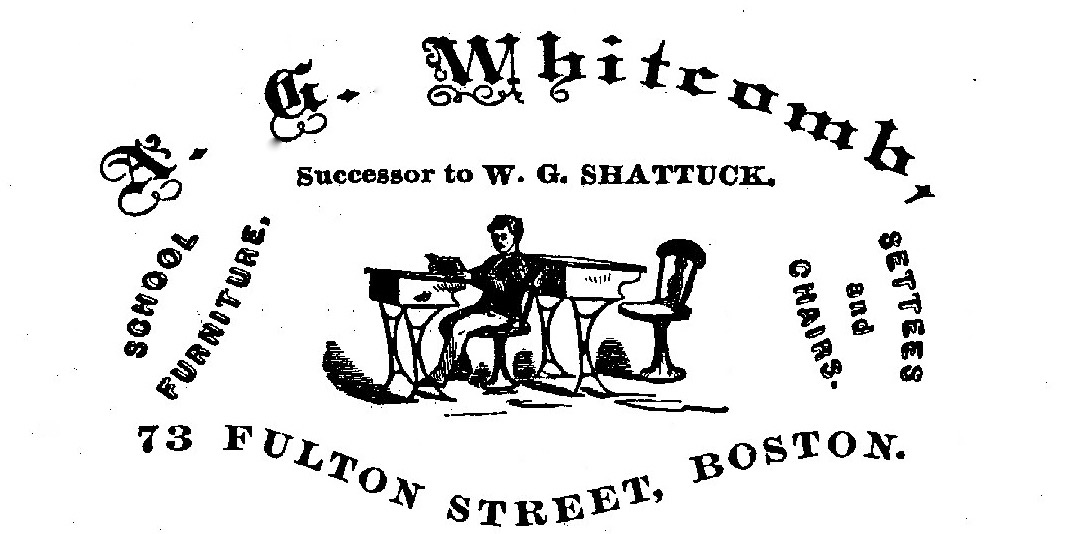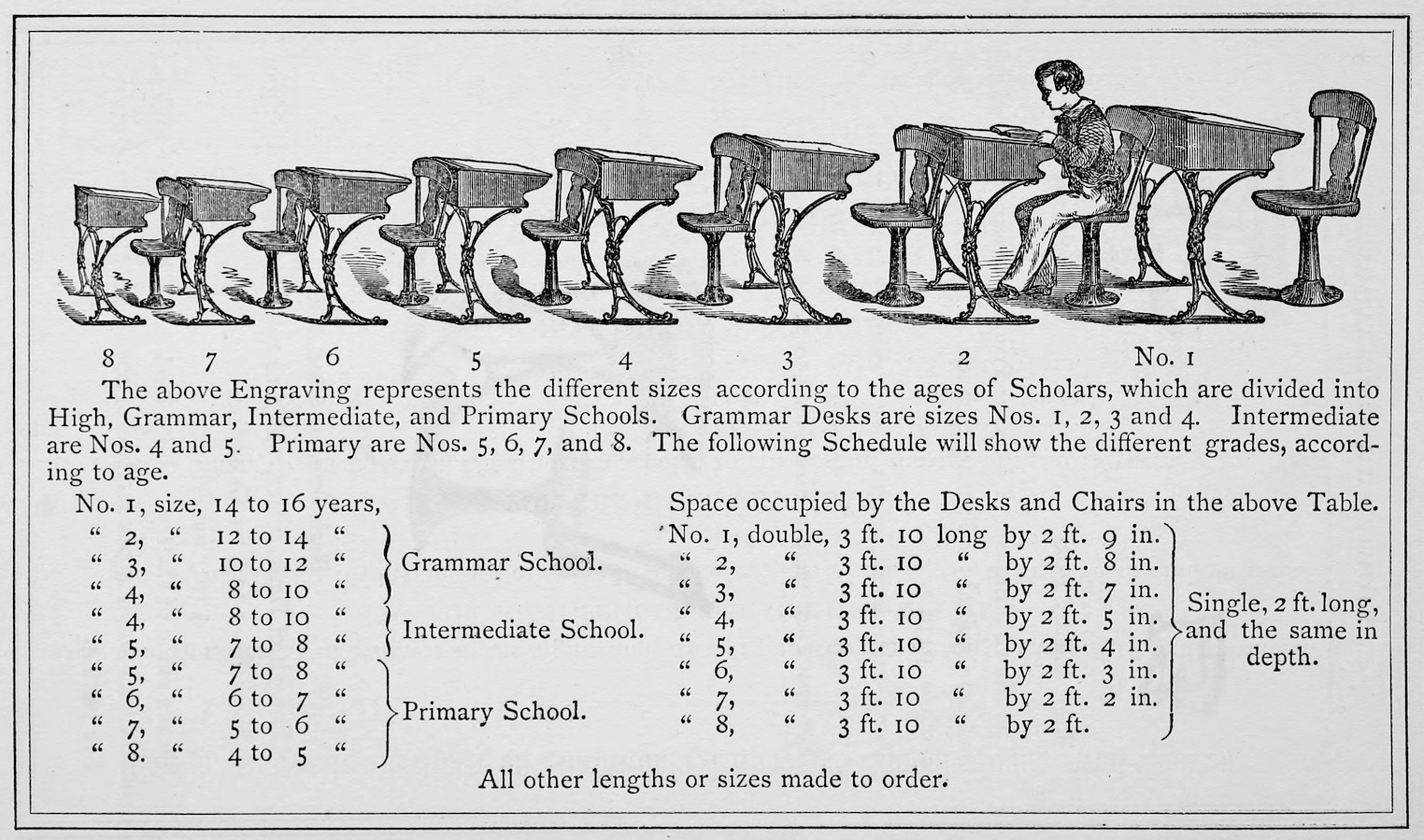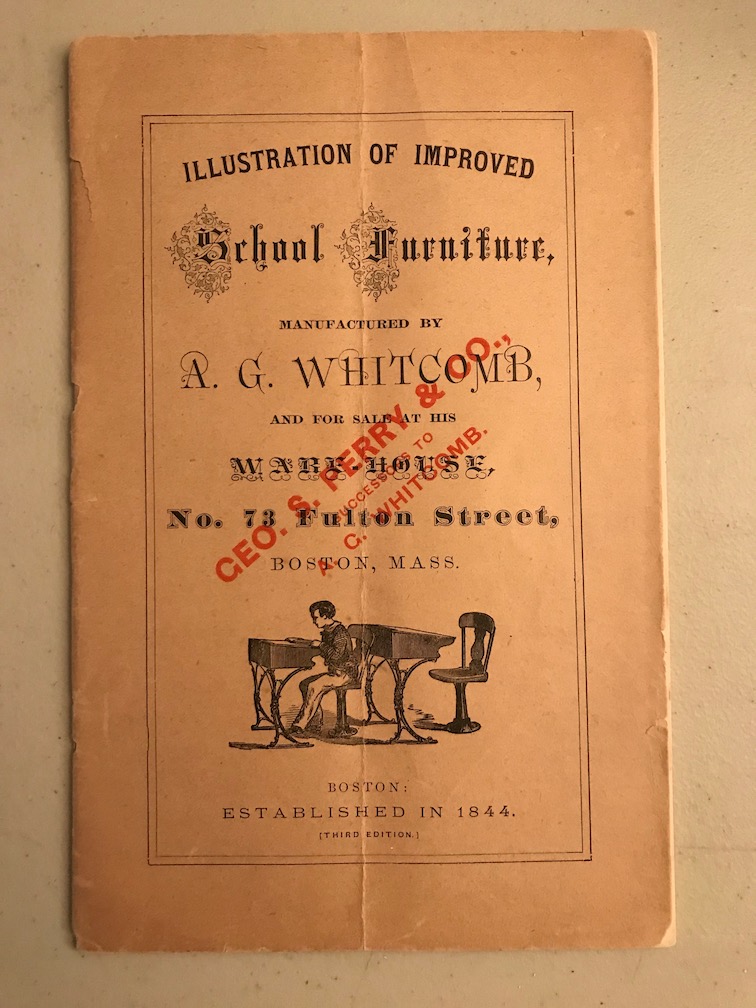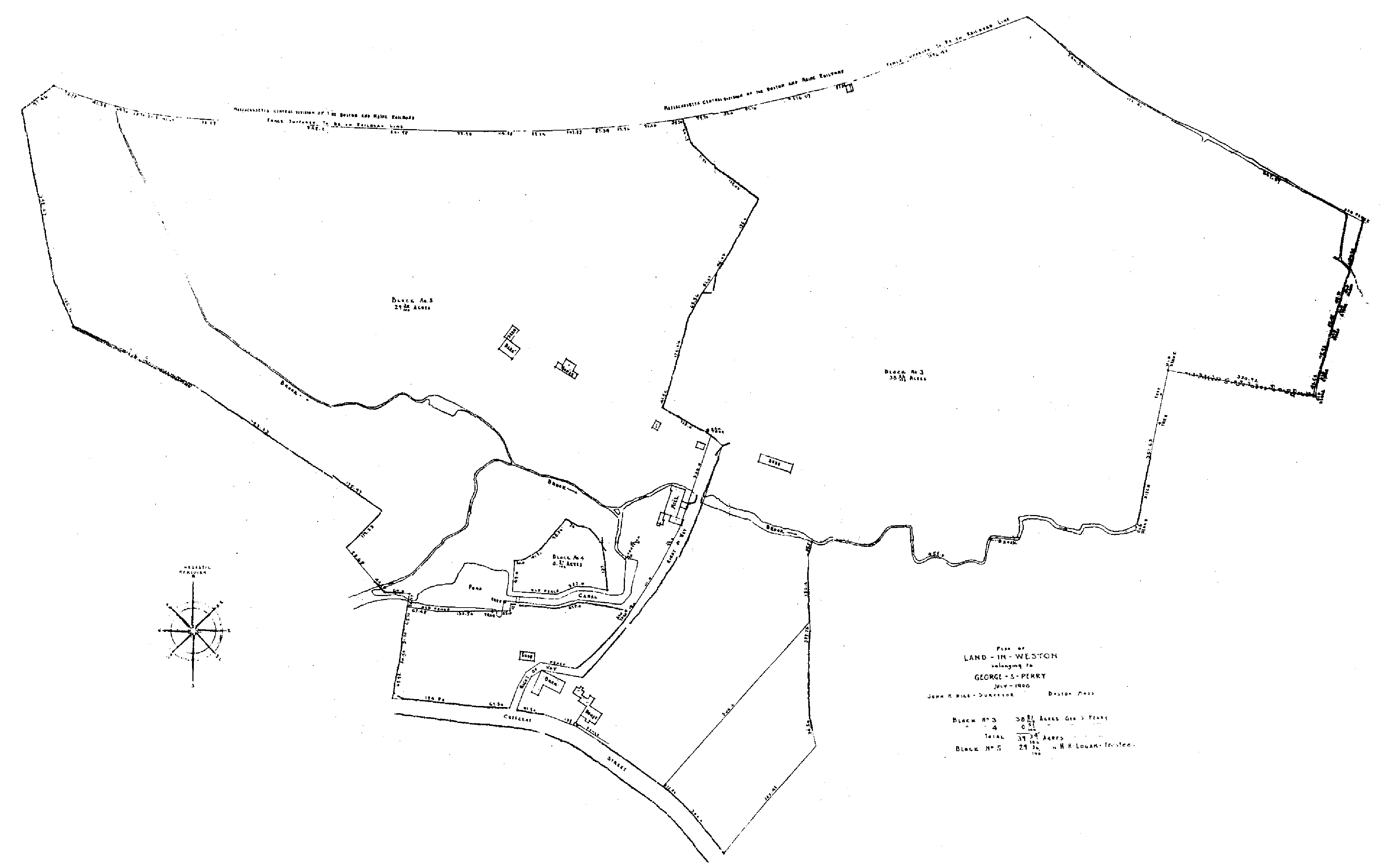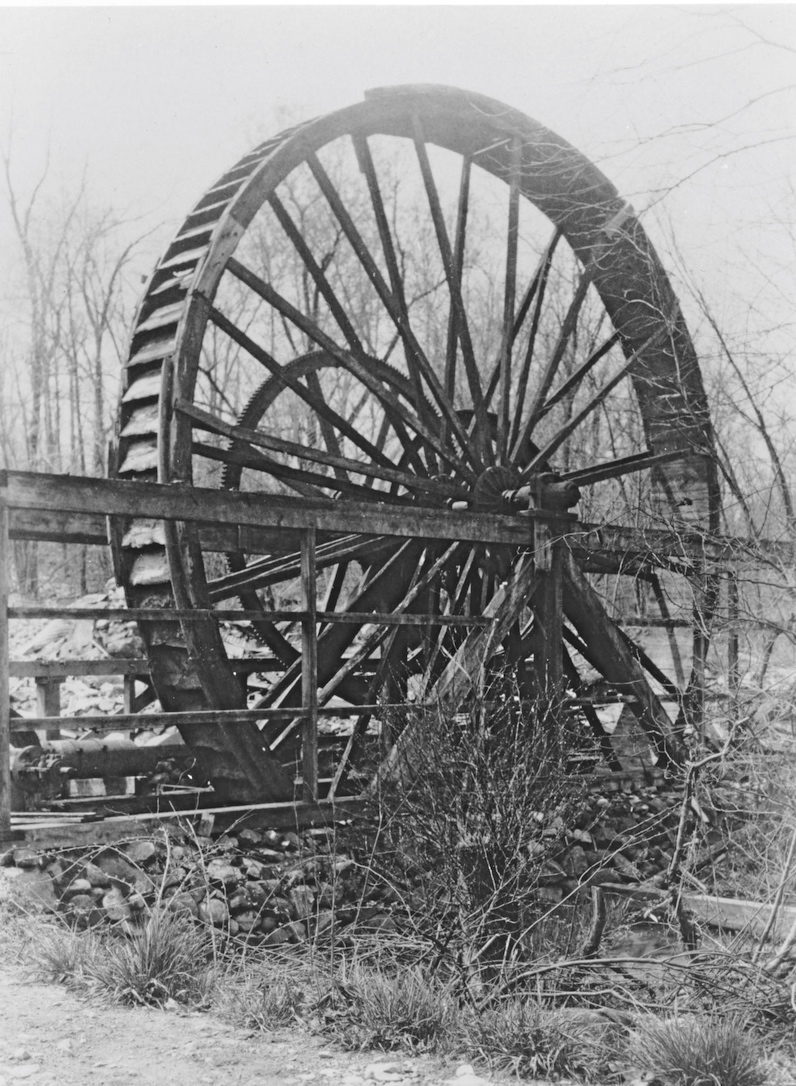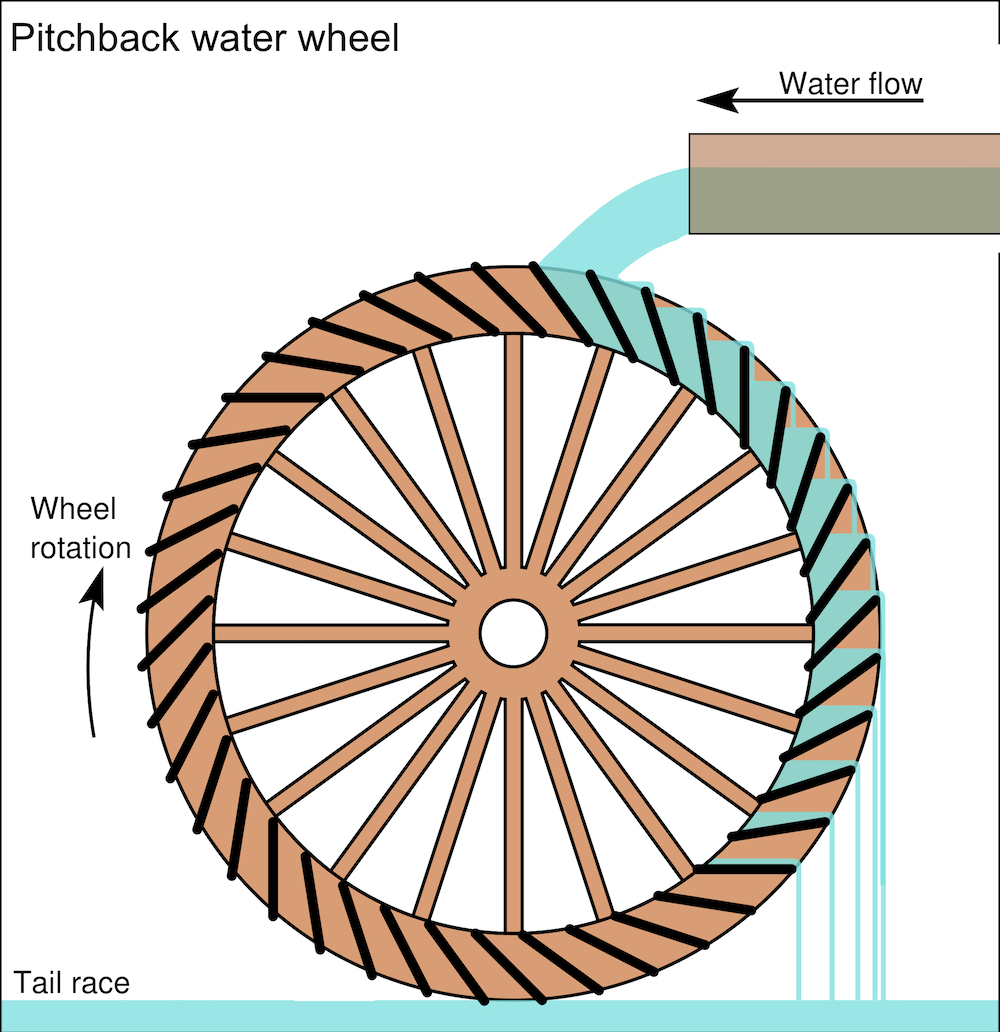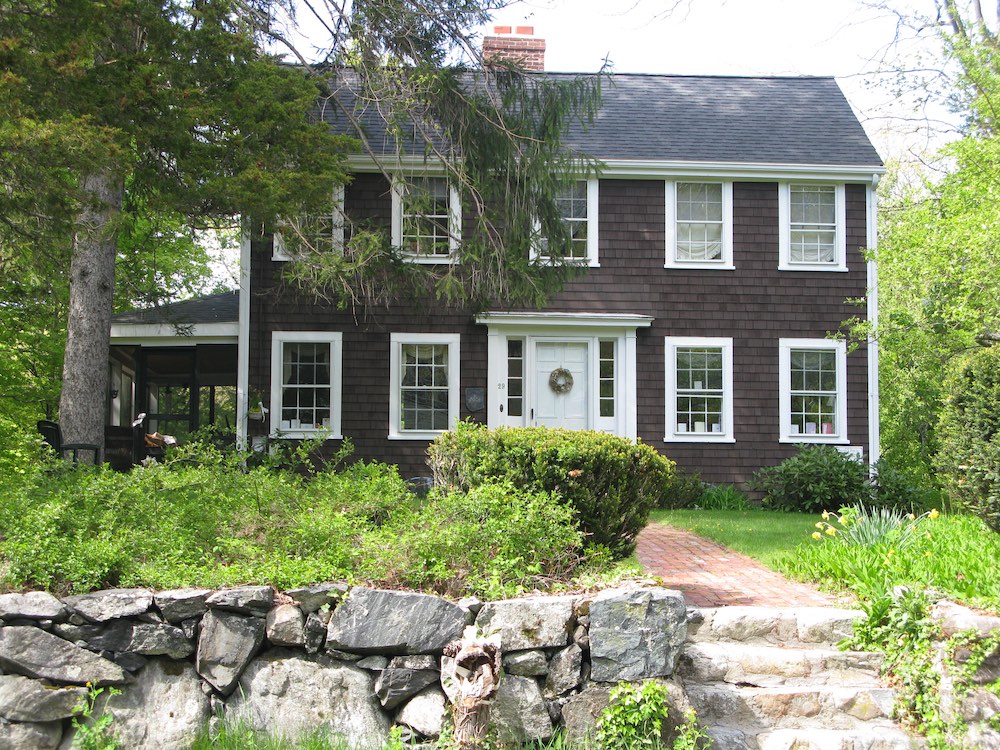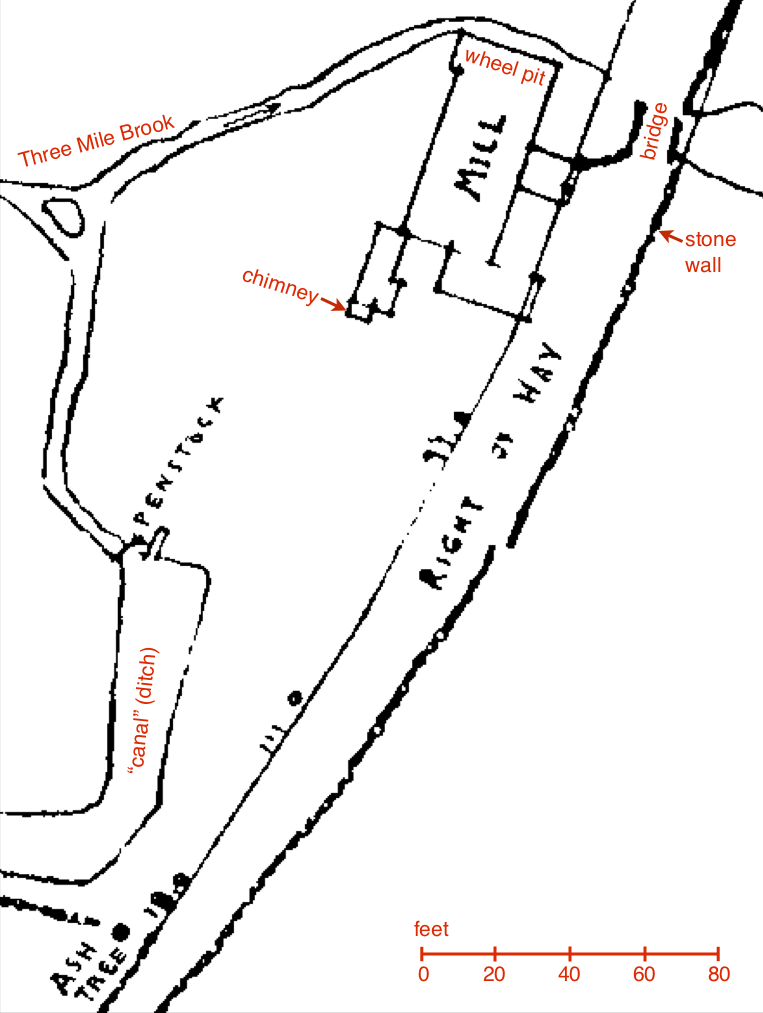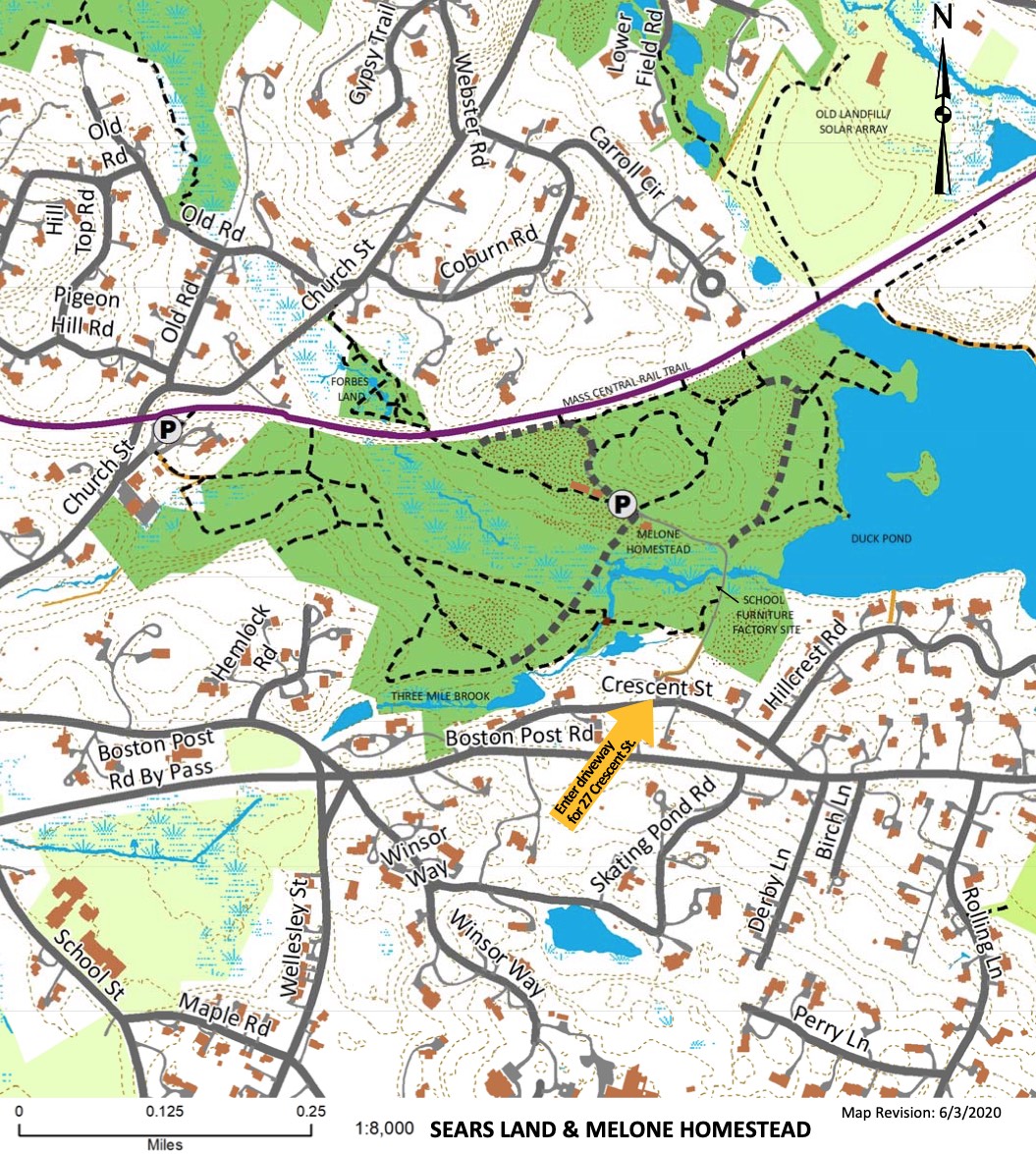WESTON PLACES - School Furniture Factory
Weston Scouts Clear Crescent Street Mill Site
Weston is fortunate to have yet another Eagle Scout project centered around a long-abandoned historic site. In 2021, Scouts cleared the foundation of the Merriam Barn [bulletin PDF] and, with assistance from Weston Historical Commission (WHC), erected a handsome information sign. In 2023, Xaverian Brothers High School senior Ciaran Gavin focused his Eagle Scout project on the site of a school furniture factory once located close to his Crescent Street home. The foundation was completely overgrown, giving few clues to the size of the mill, which operated here from 1854 to 1917. Ciaran secured the approval of the WHC, assembled a crew of Scouts to clear the 5,000 square-foot site, and worked with commission members on a sign, designed by Ford Curran and dedicated to the memory of Anna Melone Pollock. The sign was erected in October 2023. A second sign is planned, showing how water was diverted from Three Mile Brook through a canal to power the mill. Assisting with the project was Cindy Bates, author of a forthcoming history of the area and nearby Melone Homestead. The text for the information sign is as follows:
In 1854, William G. Shattuck established a mill here to produce school furniture, powered by water from Three Mile Brook. Four to eight men produced wooden chairs and desk parts sent to Boston for finishing, assembly, and sale. Upon Shattuck’s death in 1875, ownership of the business passed to the Kenney family. In 1917, they moved the operation to a larger site in Central Massachusetts. The building was dismantled in 1925 and the materials were used to build the house at 29 Crescent Street.
The Sears Land and Melone Homestead sign [PDF] and trail map [PDF] can be viewed online.
Please respect these conservation efforts and do not disturb this site.
The School Furniture Factory
Located on Crescent Street from 1854 to 1917
From the early settlement of Weston through the 1930s, Three Mile Brook powered a succession of small mills behind Crescent Street. In 1854, East Boston resident William G. Shattuck, a chair dealer, established a factory for the manufacture of school furniture on the third of three mill sites. Workers produced wooden chair and desks parts sent to Boston for finishing, assembly, and sale. Shattuck’s school furniture was sold to school districts throughout the Boston area and as far away as Washington, D.C.
By 1860, Shattuck employed seven men at his Weston factory and produced 5,000 school chair seats and 2,500 desks, as well as settees and other chairs. In 1875, the men worked 10-hour days, six days a week. According to Massachusetts industry statistics for that year, their average daily wage, $2.75, was the highest reported in the state among furniture manufacturers.
Weston Historical Society owns two chairs made during the Shattuck years, as well as a double desk that is missing its iron legs.
William Shattuck died in 1875. The finishing and distribution side of the business, on Fulton Street in Boston’s North End, was purchased by Amasa Whitcomb, a long-time employee who lived in Chelsea. He announced the change with a new edition of what had been the Shattuck catalog, as well as advertising.
The manufacturing side of the business was purchased by two other employees, both of whom lived in the neighborhood: Oliver N. Kenney, “school furniture manufacturer,” and James Miller, “school furniture master.” They rented the mill and its machinery (jointer, planer, drill press, saws, and lathes) from Shattuck’s widow, Eliza. In 1880 Miller & Kenney employed three men and one boy who worked year-round: ten hours a day in the summer months, eight hours a day in the winter months. The skilled worker(s) earned $2.00 a day, the ordinary worker(s), $1.25. In 1881, Kenney became the sole proprietor and continued the business under the name O. N. Kenney.
About 1891, neighbor George Perry bought the distribution business from Whitcomb and changed the name to George S. Perry & Company. He added school supplies and slate blackboards to the list of products distributed by the Boston-based firm.
On the manufacturing side, Oliver Kenney continued to run the school furniture factory until 1893, when he was succeeded by his son Ralph. The following year George Perry purchased the factory’s machinery from Eliza Shattuck’s trust, becoming the new lessor to Ralph Kenney & Company.
In 1901, Perry sold the distribution side of the school furniture business to a new Boston-based entity, Kenney Bros. & Wolkins, formed by Ralph and Charles Kenney, both from the neighborhood, and Henry S. Wolkins of West Roxbury, a move that reunited manufacturing and distribution. A few months later, the Waltham Daily Free Press Tribune reported that “Kenney Bros are working on an order of 1,500 intermediate desks for Washington, D.C.”
To harness the energy in Three Mile Brook, water was diverted to a point above the mill where its release could be controlled. Originally, a turbine waterwheel, situated in a chamber beneath the mill, probably provided power, backed up by steam or a horse when water was unavailable because of drought or freezing. The turbine drove the mill’s machinery on the floors above through a system of belts and pulleys. By 1880, a 9-inch turbine providing 10 horsepower was in use, backed up by a 7-horsepower steam engine.
In the 1890s Perry replaced the turbine with a large vertical waterwheel and a flume, perhaps in the form of a pipe called a penstock, to convey the water from the hill to the top of this wheel. The waterwheel was more efficient than the old turbine but a headache in winter months. Ice would form on one side and cause it to run unevenly. A small steam engine was still needed during the summer when water was low.
No finishing was ever done in Weston. The desk boxes and chair seats were hauled on a two-horse cart to Boston, where they were finished and packed for shipment. Decades later, Charles Kenney’s son Bill described the trip to the Fulton Street warehouse in Boston:
Once a week and two or three times a week during the summer months, the “hill team” with its load of furniture on the way to Boston was a familiar sight on the Post Road. The load was made up in the afternoon and promptly when the whistle blew at 7 o’clock the next morning the team started up the hill, turned left on Crescent St. to the Post Rd. . . . Gus Upham drove the team for many years and he was so regular that it is said old timers used to set their watches when he passed their doors.
George Perry bought the mill lot and other Shattuck land from the Shattucks’ surviving daughter in 1900. He died in 1904 with 100 acres of land in the neighborhood.
On May 21, 1905, a disastrous fire, thought to have been of incendiary origin, razed the original mill. A description in the Waltham Daily Free Press Tribune the following day described the “old wooden structure,” two stories high, 30 feet by 50 feet, valued at $2,000, with stock valued at $4,000. A one-story frame structure was quickly rebuilt on the same site, with new machinery. A new waterwheel, similar to its predecessor, was installed — a 28-foot diameter pitchback wheel.
In 1916, the main shaft of the great wheel broke. A much more efficient turbine was installed, in a draft tube, to reduce turbulence. A year later Kenney Bros & Wolkins moved the operation to a larger site on the Otter River in the Central Massachusetts mill village of Baldwinville in Templeton.
In 1918, Francis B. Sears Jr. bought most of the Perry land and moved into the house at 21 Crescent Street. He dismantled the school furniture factory in 1925 and used the lumber to build the house at 29 Crescent for his chauffeur, Isaac Comeau, and his wife Theresa.
The 28-foot diameter pitchback waterwheel stood until about 1940, having become something of an attraction for waterwheel fans. The stones outlining its wheel pit remain along with the foundation of the mill building. Chimney bricks lie near the outbuilding attached at the southwest corner that contained the steam boiler.
In 1975, the Town of Weston acquired the Sears Land for conservation.
Appendix: Names and Dates
Isaac Comeau (1890–1979), chauffeur to Frank Sears Jr.
Theresa Comeau (1891–1959), wife of Isaac Comeau
Charles Kenney (1860–1945), lived at 315 Boston Post Road (now 12 Hemlock Road)
Oliver N. Kenney (1834–1895), lived at 47 School Street
James Miller (1832–1906), lived at 137 Boston Post Road, then about 1881, moved to Crescent Street, probably to No. 27.
George Springer Perry (1855–1904), grew up at 21 Crescent Street, built the house at 225 Boston Post Road.
Francis B. Sears Jr. (1882–1943), nephew of estate owner Horace Sears, worked for his uncle’s cotton brokerage firm and later became president of Waltham National Bank.
William G. Shattuck (1815–1875), East Boston. Shattuck established his business in 1844, first painting chairs and then expanding to the manufacture of school furniture.
Augustus M. Upham (1853–1939), contractor, farmer, road commissioner
Amasa Whitcomb (1827–1898), Chelsea
Henry S. Wolkins (1866–1937), West Roxbury
Sources:
“Crescent Street Economic Development” excerpt from Crescent Street Historic District Study Committee Report. Crescent Street Local Historic District. 1992. https://www.westonma.gov/576/Crescent-Street-Local-Historic-District. Accessed 7 Aug. 2023.
Bates, Cynthia B. Excerpts from Uncovered: The History and Mystery of the Melone Homestead, 27 Crescent Street, Weston, Massachusetts (book in manuscript form).
Fox, Pamela W. “Chapter 13: Boston Post Road (East).” Farm Town to Suburb: The History and Architecture of Weston, Massachusetts, 1830-2020. 2nd ed., Peter E. Randall Publisher, 2020.
Kenney, Bill (1888–1970) from Sarasota, Florida. Memorandum about the chair and screen factories on Crescent Street. Date unknown. Weston Historical Society.
Kenney Collection, Weston Historical Society.
Melone, Daniel. Telephone interview by Cynthia Bates, August 3, 2023.
U.S. Census, Manufacturing Schedule for Weston, Massachusetts, 1880. (Ancestry.com)

